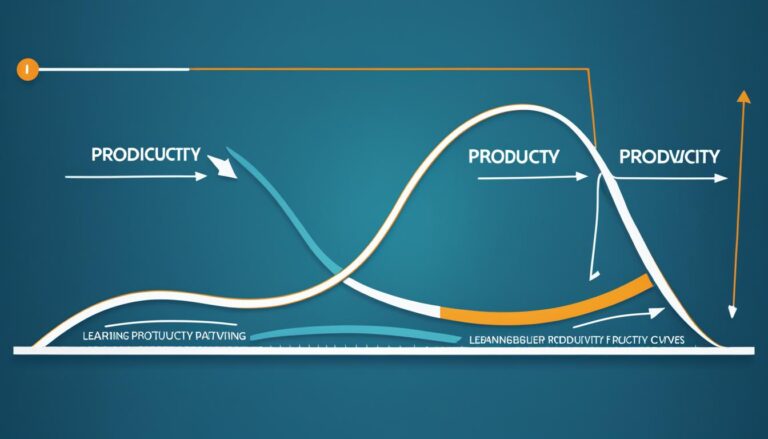Elevate Your Team: Boost Employee Productivity Now

Are you looking to boost employee productivity, increase workplace efficiency, enhance staff performance, elevate team output, and improve workforce effectiveness? The key to unlocking your team’s full potential lies in implementing effective strategies that drive productivity and optimize individual and collective performance. But where do you start? How can you create an environment that inspires and motivates your employees to excel?
In this article, we will delve into actionable strategies and expert tips on how to increase productivity of employees. We will explore the factors that drive employee productivity, from the impact of the environment to the development of generalizable skills. We will also discuss the importance of designing smart workflows and cultivating happiness in the workplace. By the end of this article, you will have a comprehensive understanding of how to elevate your team and boost employee productivity like never before.
Key Takeaways:
- Create an environment that promotes productivity and maximizes individual and team performance.
- Understand the factors that drive employee productivity, including the impact of the environment and the development of generalizable skills.
- Design smart workflows that prioritize tasks and allow for focused work.
- Cultivate happiness in the workplace through work-life balance and positive relationships.
- Implement the strategies and tips discussed in this article to enhance workforce performance and improve productivity.
Understanding the Factors that Drive Employee Productivity
Productivity research suggests that a person’s environment has a significant impact on their productivity, even more so than their innate abilities or genetic predispositions. This means that as leaders, you have the power to create an environment that promotes productivity and maximizes individual and team performance.
While some individuals may naturally possess traits that contribute to higher productivity levels, such as focus or discipline, productivity is ultimately a generalizable skill that can be developed and improved through various techniques and strategies. This is good news because it means that you can take steps to increase the productivity of your employees.
To effectively increase individual productivity, it is crucial to understand the impact of the environment on employee performance. By creating an environment that is conducive to productivity, you can set employees up for success and enable them to reach their full potential.
By understanding these factors and focusing on creating the right environment, leaders can drive overall workforce effectiveness and help their employees thrive.

The Nature vs Nurture Debate
When it comes to employee productivity, the age-old debate of nature versus nurture comes into play. While some argue that productivity is primarily determined by a person’s inherent abilities and traits (nature), research suggests that the environment plays a more significant role in shaping productivity levels (nurture).
Creating a nurturing environment that eliminates distractions, fosters collaboration, and encourages continuous learning can significantly enhance employee productivity. By providing the right resources, support, and opportunities for growth, you can help your employees develop the skills and mindset necessary for peak productivity.
Generalizable Skills and Individual Productivity
Productivity is not limited to specific tasks or industries but can be applied across various contexts. This is because productivity is a generalizable skill that can be transferred and applied to different areas of work.
By emphasizing the development and improvement of generalizable skills, such as time management, prioritization, and communication, you can equip your employees with the tools they need to increase their individual productivity. These skills enable employees to navigate complex tasks, make informed decisions, and work efficiently, ultimately driving overall team performance.
Investing in employee development and providing opportunities for continuous learning and growth can enhance individual productivity and create a culture of continuous improvement within your organization.
Designing Smart Workflows for Maximum Productivity
Smart workflows are essential for boosting productivity and maximizing individual and team performance. By implementing effective strategies, you can create an environment that promotes productivity and increases employee output. Here are some key smart workflow strategies to consider:
Prioritized Planning
Prioritized planning plays a crucial role in ensuring that tasks are organized based on urgency and importance. By prioritizing your tasks, you can prevent decision fatigue and improve overall efficiency. Take the time to identify the most important tasks that need to be completed first and allocate your resources accordingly. This approach allows you to focus on high-priority activities that have the greatest impact on your productivity.
Focus on One Task at a Time
It’s easy to get overwhelmed when you have multiple tasks to juggle. However, dividing your attention between tasks can diminish productivity and lead to cognitive switching penalties. To combat this, focus on one task at a time. Prioritize your tasks and give each one your full attention before moving on to the next. By practicing this approach, you can enter a state of flow and accomplish tasks more efficiently and effectively.
Externalize To-Do Lists
Keeping track of your to-do lists externally can help you stay organized and focused. Rather than relying on your memory or scattered notes, utilize tools and technologies to externalize your to-do lists. This allows you to have a clear overview of your tasks and progress, ensuring that nothing falls through the cracks. Project tracking tools, such as Trello or Asana, can be great allies in managing your workflow and achieving optimal productivity.
By incorporating these smart workflow strategies into your daily routine, you can enhance productivity, improve efficiency, and achieve better results. Remember to prioritize your tasks, focus on one task at a time, and externalize your to-do lists for maximum effectiveness.

Cultivating Happiness for Productivity
Employee happiness is a crucial ingredient in driving productivity and creating a thriving workforce. Research has shown that when employees are happy, they tend to be more productive, achieve higher sales, and take fewer sick days. As a leader, it is essential to create a work environment that prioritizes employee happiness and well-being.
One key aspect is ensuring a healthy work-life balance for your employees. When employees feel supported in managing their personal and professional responsibilities, they can maintain their well-being and avoid burnout. Encourage them to take breaks, set boundaries, and provide flexibility when possible. By doing so, you help create a happier and more engaged workforce, resulting in increased productivity.
Another important factor in cultivating happiness and productivity is promoting positive workplace relationships. Encourage collaboration, open communication, and team-building activities. When employees feel connected to their colleagues and have a strong support system, they are more likely to enjoy their work and feel motivated to contribute their best efforts.
Did you know? Studies have shown that positive workplace relationships can lead to higher job satisfaction and improved work performance.
To further foster employee happiness and create a supportive work culture, consider implementing initiatives such as employee recognition programs, wellness programs, and opportunities for professional development. Show appreciation for your employees’ hard work and provide them with tools and resources to enhance their skills and grow in their roles.
Ultimately, by prioritizing employee happiness and well-being, you can create an environment where productivity thrives. A happy workforce is a productive workforce, and investing in employee happiness is undoubtedly a worthwhile endeavor.

Conclusion
In today’s fast-paced business world, enhancing employee productivity is crucial for organizations to stay competitive and drive success. By implementing actionable strategies for productivity improvement, you can boost workforce performance and achieve outstanding results.
First and foremost, creating the right environment is essential. Provide your employees with a comfortable workspace that is conducive to concentration and creativity. Foster open communication and collaboration, encouraging teamwork and idea-sharing. A positive and supportive work culture cultivates a sense of belonging, leading to increased motivation and productivity.
Additionally, designing smart workflows is key to optimizing employee efficiency. Prioritize tasks, breaking them down into manageable steps. Encourage employees to focus on one task at a time, minimizing distractions and maximizing concentration. By externalizing to-do lists and utilizing project tracking tools, you can ensure that tasks are organized and progress is visible, leading to improved productivity.
Lastly, don’t overlook the importance of employee happiness. Strive to create a work-life balance by promoting flexible work arrangements and providing resources for personal well-being. Invest in professional development opportunities to foster growth and job satisfaction. Remember, happy employees are productive employees.
By following these tips to boost employee productivity, you can unlock the full potential of your workforce and drive organizational success. Remember, productivity improvement is an ongoing journey, so continue to seek feedback, make adjustments, and support your employees in their quest for excellence. Together, you can elevate your team and achieve remarkable results.
FAQ
How can I boost employee productivity?
To boost employee productivity, you can create the right environment, design smart workflows, prioritize employee happiness, and foster positive workplace relationships. By implementing these strategies, you can enhance staff performance, increase workplace efficiency, elevate team output, and improve workforce effectiveness.
Does a person’s environment impact their productivity?
Yes, research suggests that a person’s environment has a significant impact on their productivity. Creating an environment that promotes productivity and maximizes individual and team performance is crucial in driving employee productivity.
Can productivity be developed and improved?
Yes, productivity is a generalizable skill that can be developed and improved through various techniques and strategies. By understanding the factors that contribute to productivity and implementing the right strategies, leaders can increase the productivity of their employees and drive overall workforce effectiveness.
How can I design smart workflows for maximum productivity?
To design smart workflows, prioritize planning based on urgency and importance, focus on one task at a time to avoid cognitive switching penalties, and utilize project tracking tools to stay organized and focused. These strategies can improve efficiency and enable employees to fully utilize their creative resources for real work.
Does employee happiness impact productivity?
Yes, research shows that happy employees are more productive. By creating a work environment that prioritizes work-life balance, fostering positive workplace relationships, and promoting collaboration, leaders can contribute to employee happiness and boost productivity.






